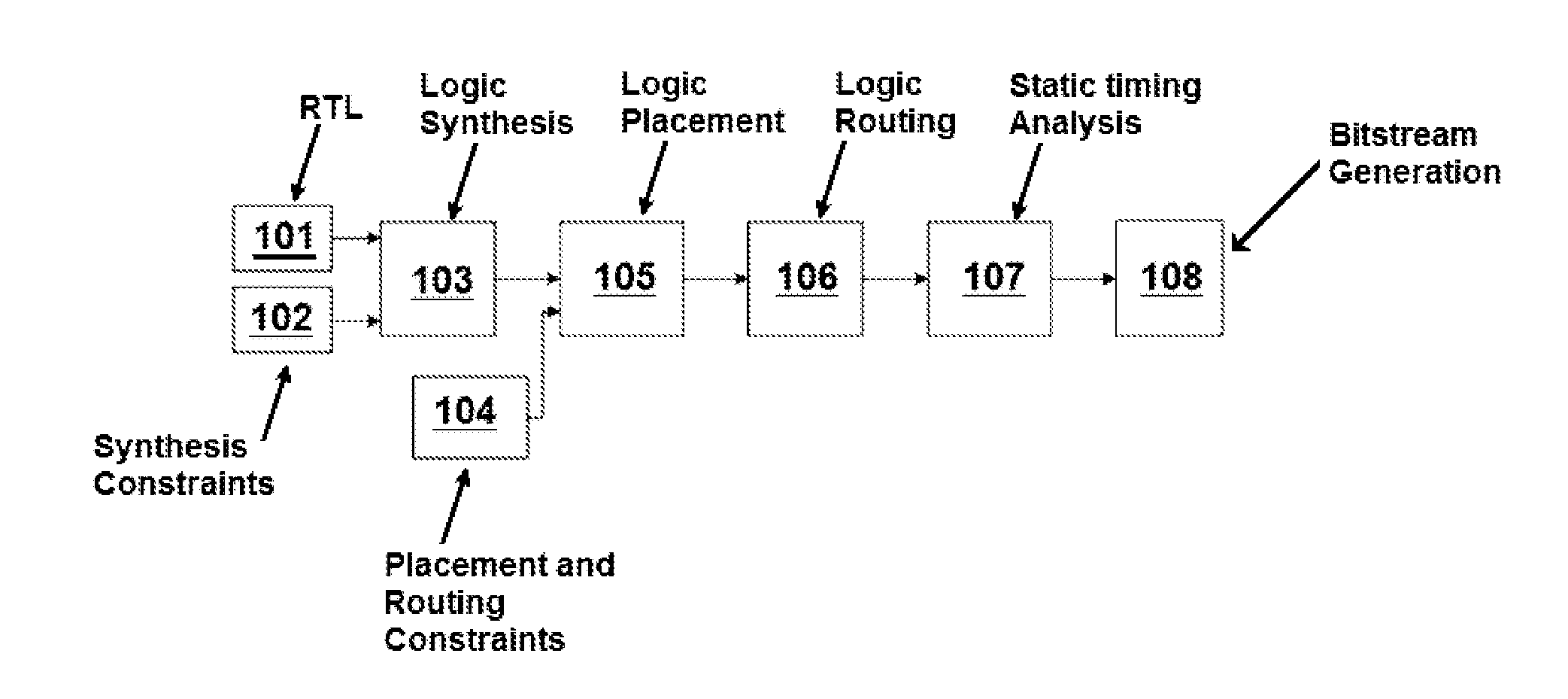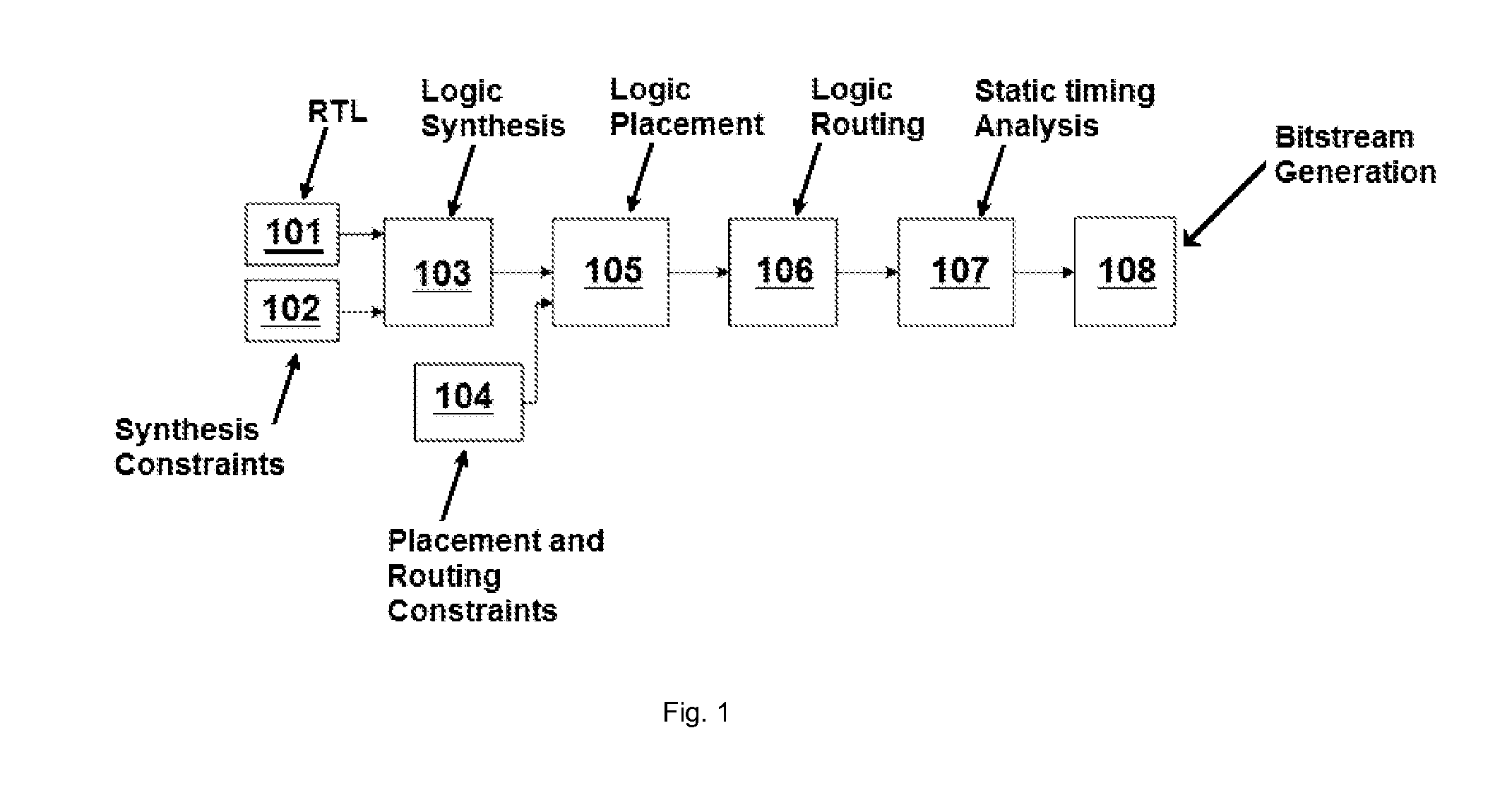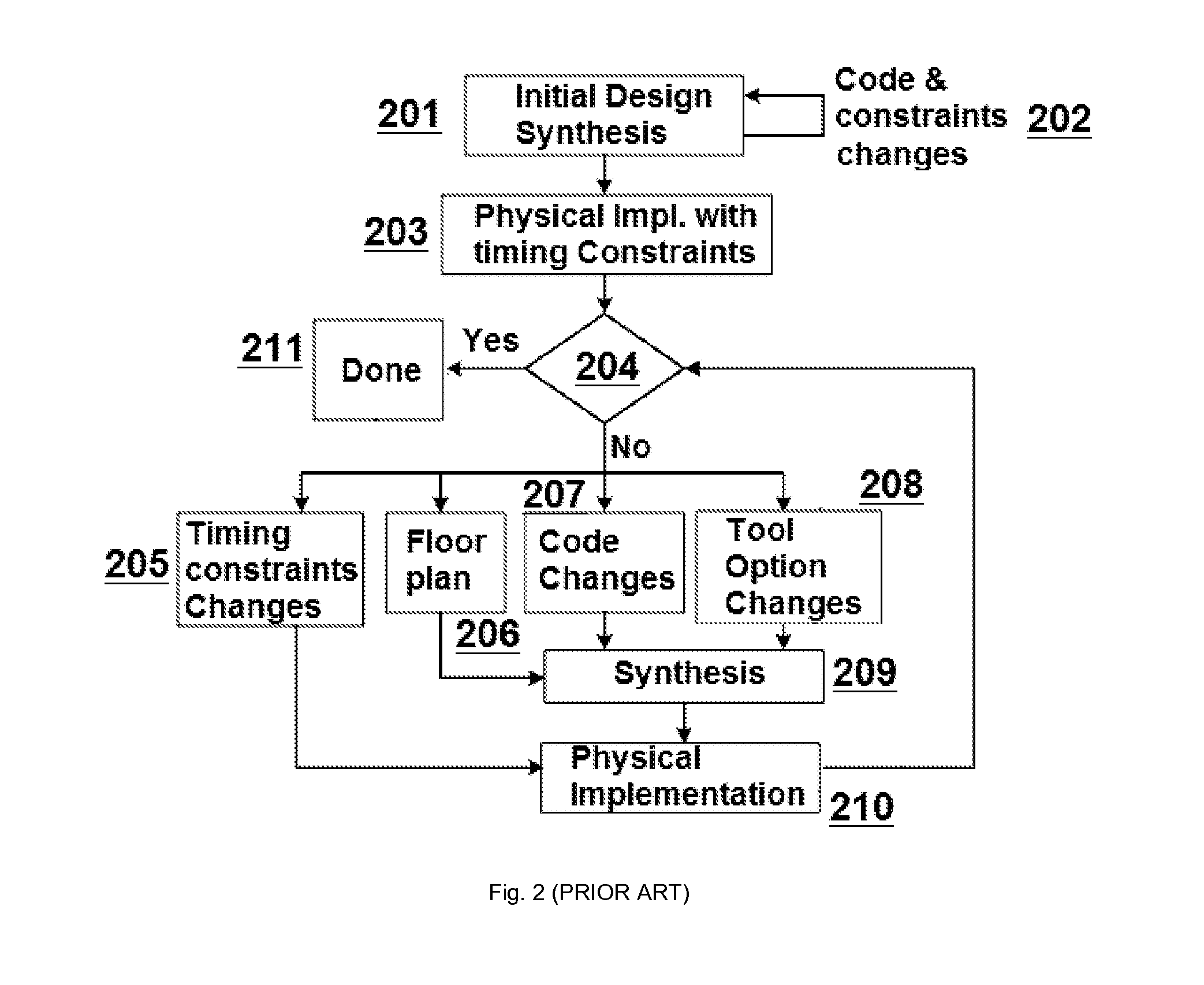Semi-automated method of FPGA timing closure
a timing closure and semi-automatic technology, applied in the field of semi-automatic fpga timing closure, can solve the problems of slow and inefficient existing timing closure methods, and is not suitable for many ic design processes
- Summary
- Abstract
- Description
- Claims
- Application Information
AI Technical Summary
Benefits of technology
Problems solved by technology
Method used
Image
Examples
Embodiment Construction
[0012]FIG. 1 shows a process of FPGA building as a sequence of steps carried out in the building of an FPGA circuit from a Register Transfer Level (RTL). A typical process of FPGA building includes an RTL 101, which is a level of abstraction used in describing the operation of a synchronous digital circuit. Another input apart from the RTL, is a set of synthesis constraints 102 that is fed into the logic of synthesis 103. In this process, placement and routing constraints play a major role in determining the actual floorplanning. In order to achieve a higher speed and timing closure, optimized routing and placement is necessary. Floorplanning a large, high speed design is the key to achieving timing closure. A good floorplanning can dramatically improve the design performance, and ensure consistent quality of the build results. Poor floorplanning can have an opposite effect, namely, making it impossible to meet timing constraints and cause inconsistent build results. Any of the floo...
PUM
 Login to View More
Login to View More Abstract
Description
Claims
Application Information
 Login to View More
Login to View More - R&D
- Intellectual Property
- Life Sciences
- Materials
- Tech Scout
- Unparalleled Data Quality
- Higher Quality Content
- 60% Fewer Hallucinations
Browse by: Latest US Patents, China's latest patents, Technical Efficacy Thesaurus, Application Domain, Technology Topic, Popular Technical Reports.
© 2025 PatSnap. All rights reserved.Legal|Privacy policy|Modern Slavery Act Transparency Statement|Sitemap|About US| Contact US: help@patsnap.com



